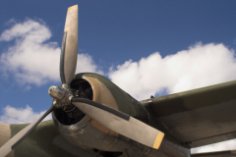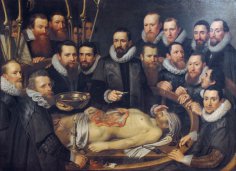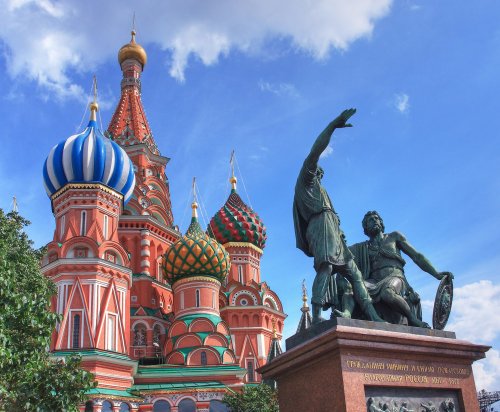
Today in “The Chronicle of War,” we'll discuss those “air taxis of war” that exposed themselves to the greatest danger. We're talking about attack aircraft, which, on the one hand, were highly vulnerable to damage (suffice it to say that until 1943, the title Hero of the Soviet Union was awarded to pilots who survived 30 combat missions), and on the other, were a real scourge for the Wehrmacht. It's no wonder the Il-2 bore several self-explanatory names: German pilots called it the “concrete plane” for its ability to withstand devastating damage. At the mention of the Il-2, Nazi ground troops would turn their heads, peering into the blue sky, searching for its location: the “butcher,” the “meat grinder,” the “Iron Gustav,” or the “Black Death.”
…On January 8, 2008, the heart of one of the bravest pilots of the Great Patriotic War, Hero of the Soviet Union, Colonel General of Aviation, and State Prize laureate Georgy Andreevich Kuznetsov, stopped beating.
He was a courageous man, whose story could and should be told. But it so happened that on that sad day, not many people attended the Hero of the Soviet Union's final journey to Troekurovskoye Cemetery…
The 18-year-old lieutenant was not afraid of the enemy…
He lived a long and illustrious life. At 18, he entered the 19th Military Aviation Pilot School, which he successfully graduated from in 1942. Georgy was eager to go to the front, but he was assigned to the 1st Reserve Aviation Regiment. However, almost immediately, the regiment was converted into a military school for naval aviation, so Kuznetsov continued his education, mastering the Il-2.
In October 1943, the young lieutenant's dream finally came true: he was assigned to the 8th Guards Assault Regiment, commanded by Hero of the Soviet Union Nikolai Chelnokov. He was a legend of attack aviation; suffice it to say, Nikolai Vasilyevich had been flying since 1928, and during his time as regiment commander, he personally sank a transport, a patrol ship, a torpedo boat, and two Nazi high-speed landing craft.
No less reckless was the squadron commander Kuznetsov was assigned to, Guards Captain Nikolai Nikolaev, a recognized master of strikes on pinpoint targets, a specialist not only in barges, but also in ground assaults, where he invariably demonstrated ingenuity, courage, and precise and cold-blooded calculation.
Four steps to death?
Guards Lieutenant Kuznetsov's rise to prominence was relatively quick alongside such aces. And three months later, the young officer was… buried. It happened like this: while supporting a landing near Kerch, one of the Messerschmitts pierced Kuznetsov's dive-bomber with a cannon burst, puncturing its fuel tank. Kuznetsov managed to turn the flaming plane around and flew back to his own side. But he couldn't even reach our paratroopers, let alone the airfield. He landed the Il-2 right in front of the barbed wire separating the German and our trenches.
Between life and death, as the song goes, there were four steps. That's exactly what Kuznetsov and his gunner took on the wing of the burning attack aircraft. And from the wing, they jumped into our territory. As soon as the gunner hit the ground, the plane exploded…
The paratroopers sent the pilots to the hospital (both were wounded). But they escaped and decided to return to their unit. They hitchhiked almost to their destination; all that remained was a snow-covered field. They raced across it, and only halfway there did they spot a sign: “Caution, Mines!” How they survived was beyond them.
The pilots of the 8th Guards Assault Regiment expected to see the crew alive even less. They'd already managed to drink their 100 grams of vodka for Kuznetsov's soul. The squadron commander, embracing his lieutenant, said, “You'll live a long time, Zhorik! We're already getting ready to send a funeral notice to the family…”
In 1944, the regiment was transferred from the Black Sea to the Baltic. By then, the “requirement” for the title of Hero was already 80 combat sorties, while Kuznetsov had “only” attacked the enemy 66 times. But the main thing was that he was in the line.
Georgy rightfully considered July 31, 1944, his third birthday. That day, he was part of a combat group that took part in an assault on the Nazi flotilla in Narva Bay. He managed to sink a patrol ship. But disaster struck as he was exiting the attack: an enemy anti-aircraft shell severed the Il-2's engine oil line. The engine seized, forcing an emergency landing in the water. The pilot and radio operator nearly died. The cockpit canopy jammed, and only with superhuman effort did Kuznetsov manage to escape just as the plane was already sinking. Thankfully, their life jackets were in good condition. A few hours later, a floatplane picked them up from the Baltic waters.
Guards Senior Lieutenant Georgy Kuznetsov celebrated his first year at the front with distinction. By then, he had flown 101 combat sorties, personally sunk 15 enemy ships, destroyed dozens of guns, tanks, vehicles, and hundreds of Nazis. It was no coincidence that he was nominated for the title Hero of the Soviet Union. It's a shame, however, that Guards Captain Nikolaev hadn't returned from his combat mission by that time; he died on June 18, 1944. Regimental commander Nikolai Chelnokov, meanwhile, was twice awarded the title Hero of the Soviet Union. Incidentally, a street in Kaliningrad is named after Chelnokov.
His name was Batya
But let's return to Kuznetsov. Before the end of the war, he flew 21 more ground-attack missions, increasing his combat tally of Nazi casualties. On July 3, 1945, he turned 22, and a long life lay ahead, as Nikolai Nikolaev had once predicted. Georgy decided to remain in the army. His service included studies at the Air Force Academy and the General Staff Academy, and command of an aviation regiment and large aviation formations. For eight years, Georgy Andreevich commanded the Air Force of the Red Banner Northern Fleet. Young pilots called him “Batya”…
The general's combat jacket was adorned with two Orders of Lenin, the Order of the October Revolution, six Orders of the Red Banner, the Order of Alexander Nevsky, the Order of the Patriotic War, 1st degree, the Order of the Red Banner of Labor, two Orders of the Red Star, the Order “For Service to the Homeland in the Armed Forces of the USSR”, 3rd degree, a total of 15 orders.
But it's not about the awards. The point is that it was precisely these same boys, who turned 18 during the war, who destroyed fascism. Deepest respect to them for that…





